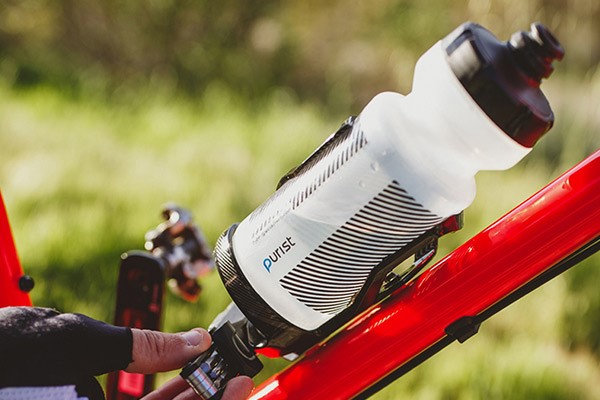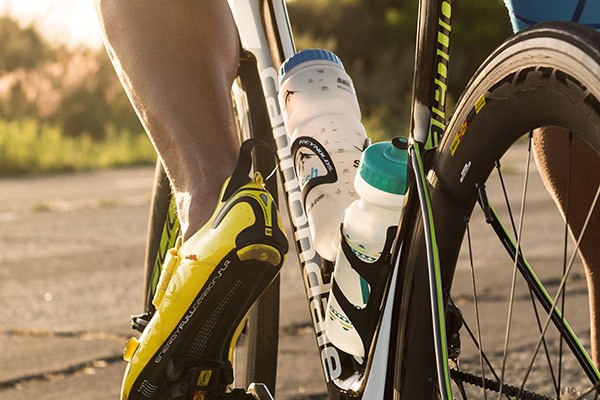Every cell in your body is made of water. In fact, we're 60% water by mass. When we start to dehydrate we quickly notice. Our physical performance and mental focus is directly tied to how hydrated we are.
Whether you're commuting to work, fitness training or taking on a long sportive you'll want to replace water lost through sweating and exertion.
With so many water bottles and the bottle cages to house them on the market, we've created this handy guide on what to look for, what types are available and how to stay hydrated.
Water bottles
Cycling water bottles are often made of plastic rather than metal because it is lighter, cheap to produce and surprisingly durable. Cheap grade plastics can leave a chemically taste when used in hot weather. It may also be worth looking for a BPA free bottle too.
Bottle Mouth
When looking to buy water bottles take a look at the bottle mouth as this determines how fast or slow the flow rate will be. A wide mouth has a quick flow whilst a narrow mouth has a slow flow. Wider mouths are easier to refill while narrow mouths cause less spillage.
Most cycling water bottles also come with a push-pull drinking valve as this method reduces spillage too.

Volume
Volumes vary between bottles but the most common sizes are 500ml and 750ml, although you can bigger volumes. Bear in mind that the bigger the bottle, the more water you can carry. However, you'll be weighed down which is not great for road racing.
Bottle cages
To fix a water bottle to your bike you'll need a bottle cage to house it. To fit a bottle cage you will need to check your frame for braze-on's.
Cage mounts
These are threaded holes that are built into most frames and are usually found on the top side of the downtube (just behind the front wheel).
You may also find these mounts on the underside of the top tube.
Due to the frame design of full suspension mountain bikes, braze-on's can be found on the underside of the downtube.

Materials
Most bottle cages are built from lightweight plastic or durable metals including steel and aluminium. At the premium end of the market you can find very lightweight carbon composite cages to help shave grams off the frame. For performance racing there are even aero shaped cages to reduce drag.
Sizing
Most bottle cages are built to a standard size so will fit large and small bottles. Some cages do feature adjustable stoppers to offer a more refined fit.
How to stay hydrated when cycling
There is no set rule or formula which says exactly how much you should drink, there are too many variables. Body size, temperature, ride intensity and a range of other factors all weigh in.
Replace 1 litre per hour
However, the general rule of thumb is that you can lose up to a litre of water per hour for intense cycling – or around 250ml every 15mins.
That means if you have one bottle holder on your bike and you have a 500ml water bottle you may consume all that water in 30 minutes.
Check your bike for two bottle bosses for extra capacity. Two 750ml bottles can offer up to 1 hour 30 minutes of hydration.

Rides longer than 1 hour
If you're planning rides longer than 1 hour you should consider switching from water to drinks with electrolytes and carbohydrates to keep your energy up to perform at your best.
Plan your hydration
If you're mountain biking for hours at a time it's a good idea to invest in a hydration pack that can offer more capacity than bottles can. If you're entering a sportive then make use of water points. When touring or riding with your friends try to plan in water stops at a shop, café or pub.
Summary
Staying hydrated is key to performance on any ride whether off-road or on-road. Check your bike for braze-on's and choose bottles that will offer enough capacity for your ride and house it in a durable bottle cage.
See our full range of cycling bottles & cages






